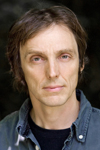In which society do powerful males form a dominant, elitist network while females are relegated to peripheral roles?
Banish those wicked thoughts. This isn't the real world, you cynics, but pure fantasy. We're talking about the Marvel Universe.
This, as any comic-book geek will tell you, is where Spider-Man, Captain America and the Hulk do their thing. As indeed does the Thing. But no, not Batman or Superman — they are part of the DC Universe, and not on speaking terms with the Marvelites. Do keep up.
The story so far: in 2002, Spanish mathematician Ricardo Alberich and colleagues in at the University of the Balearic Isle in Spain, analysed the social network formed by the Marvel comic characters according to whether they have appeared together in the same story1. There are around 6,500 of these characters in nearly 13,000 Marvel comic books, so there's plenty of evidence to reveal patterns and trends. Indeed, even the world of classical Greek and Roman mythology looks puny by comparison, with just 1,600 or so named characters in its pantheon.
What's more, the Marvel Universe has as many cliques as Hollywood — particularly since the relaunch of Marvel Comics in 1961, which spawned well-known gangs such as the Fantastic Four and the X-Men. Take the character Quicksilver, for instance, who first appeared as a member of Magneto's Brotherhood of Evil Mutants (he is Magneto's son). He later became a member of the Avengers, and then of the X-Factor, and finally the Knights of Wundagore. His twin sister is the Scarlet Witch, and his wife is Crystal, who was previously dating the Fantastic Four's Human Torch and was a member of the Inhumans. Are you following this?
Linked in
Perhaps fortunately, Alberich and team did not have to read every Marvel comic since they began (under the name Timely Comics) in 1939, because all these connections have been gathered into a database called the Marvel Chronology Project. By examining these, they deduced that the Marvel network looks in many ways like those formed in the real world.
Not only is the Marvel Universe a so-called 'small world', where just about any character can be linked to any other by just a few 'degrees of separation' (or friends-of-friends), but it is also a so-called scale-free world, where the distribution of links has a characteristic form that includes a few very highly connected individuals, who are particularly good networkers.
The Marvel Universe, like our own societies, is unplanned: it has grown from the work of many comic-book storywriters who have made no attempt to engineer any overall social network. It seems that this joint effort guided them not towards a random network, as might have been expected, but towards one that (somewhat) mirrors reality. The same thing seems to have happened in classical mythology2.
Tangled web
The scale-free property of social and other networks was discovered several years ago. But this only gives a crude measure of the network structure. More recently researchers have become interested in looking at the ways in which a network is organized and divided into distinct communities — friendship circles, say, or professional collaborations — that might then be woven together by a more tenuous web of links.
A key characteristic of human social networks, identified by Mark Newman of the University of Michigan, is that highly connected people are more likely to be linked to other highly connected people than would be expected by chance3, forming so-called 'rich clubs'. This is called assortative mixing, and contrasts with scale-free networks such as the Internet and food webs, for which there is the opposite bias.
Now Pablo Gleiser of the Centro Atómico Bariloche in Argentina4 has shown that the Marvel Universe also has rich clubs of well-connected members, which provide the 'glue' that binds distinct communities into a cohesive net.
I need a hero
Who are in these super-networking clubs? Their members are all heroes, and they're all male.
Women on the fringes is an old story in fiction: with a smattering of honourable exceptions, women have never fared well in comic books (see http://girl-wonder.org/). But the bad guys are no good at forming teams either. Why is that?
Gleiser thinks the answer lies in the 'code' created by the Comics Magazine Association of America in 1954 to govern the moral framework of the stories. It stipulates that criminals should not be glamorized, and that evil should be portrayed only to make a moral point: "In every instance, good shall triumph over evil and the criminal punished for his misdeeds."
ADVERTISEMENT
This means, says Gleiser, that "villains are not destined to play leading roles", and as a result they aren't going to become hub characters. He thinks that the predestined victory of the good guys meanwhile encourages collaborations so as to avoid the impression that they are omnipotent and can do their job easily.
That's where its creators' wishful thinking makes the Marvel Universe stray from our own. In a world where the Central Intelligence Agency (CIA) is devoting considerable effort to understanding the structures of organized-crime and terrorist networks, it is obvious that many of the most dangerous real villains aren't by any means loners (nor, one might add, that 'heroes' prefer collaboration over unilateralism). And it's as well to recognize that, because in the real world there is no one to insist that good shall triumph over evil. We have no Captain America who can ensure that.
Visit our tangledwebofsuperheroes.html">newsblog to read and post comments about this story.
-
References
- et al. preprint http://xxx.arxiv.org/abs/cond-mat/0202174 (2002).
- et al. Physica A 382, 665-671 (2007).
- et al. J. Phys. Rev. Lett. 89, 208701 (2002).
- preprint http://arxiv.org/abs/0708.2410 (2007).

